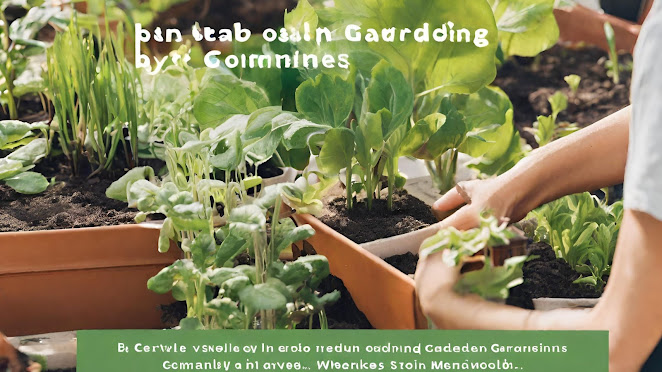Gardening is not only a fulfilling hobby but also a powerful way to contribute to a more sustainable and eco-friendly world. By adopting green gardening practices, you can reduce your environmental impact, conserve resources, and create a thriving ecosystem in your own backyard. In this blog, we'll explore a variety of tips and techniques for eco-friendly gardening, helping you transform your garden into a haven for both plants and wildlife.
Choose Native Plants:
One of the first steps toward eco-friendly gardening is selecting native plants for your garden. Native plants are adapted to your region's climate and soil, which means they require less water, fertilizer, and pesticides. They also provide food and shelter for local wildlife, such as birds and pollinators, contributing to biodiversity.
Water Wisely:
Conserving water is crucial for sustainable gardening. To reduce water usage:
Collect rainwater in barrels and use it for watering your garden.
Water early in the morning or late in the evening to minimize evaporation.
Apply mulch to retain soil moisture and reduce weed growth.
Practice Organic Gardening:
Avoid synthetic pesticides and fertilizers that can harm the environment and disrupt the natural balance of your garden. Instead, opt for organic alternatives. Composting kitchen scraps and yard waste can provide nutrient-rich soil amendments that promote healthy plant growth.
Implement Sustainable Pest Management:
Rather than resorting to chemical pesticides, practice integrated pest management (IPM). This approach involves identifying and managing pests using natural predators, trap crops, and organic solutions. By maintaining a balanced ecosystem, you can minimize pest problems.
Create Wildlife-Friendly Spaces:
Encourage biodiversity by creating spaces in your garden that attract beneficial insects and wildlife. Install bird feeders, bird baths, and bee-friendly plants. Designate a wild area with native grasses and wildflowers to provide habitat for butterflies and other pollinators.
Use Eco-Friendly Garden Tools:
Invest in eco-friendly garden tools made from sustainable materials, such as bamboo or recycled plastic. Electric or manual hand tools are also more energy-efficient than gas-powered ones and produce fewer emissions.
Reduce, Reuse, Recycle:
Practice the three Rs in your garden. Repurpose old containers for planters, use compostable or reusable materials for mulch, and recycle garden waste like leaves and branches into mulch or compost.
Embrace Permaculture:
Permaculture principles promote self-sustaining ecosystems in your garden. By designing with nature in mind, you can create a garden that conserves resources, maximizes yield, and minimizes waste.
Conserve Energy:
If you use garden lighting, opt for energy-efficient LED bulbs powered by solar panels or low-voltage systems. Timers and motion sensors can help reduce energy consumption.
Educate Yourself and Others:
Stay informed about eco-friendly gardening practices by reading books, attending workshops, and joining gardening communities. Share your knowledge with others to promote sustainable gardening in your community.
Conclusion:
Green gardening isn't just about growing beautiful plants; it's about fostering a harmonious relationship between your garden and the environment. By implementing these eco-friendly gardening tips, you can create a thriving, sustainable oasis that benefits not only you but also the planet and its diverse inhabitants. Start small, make gradual changes, and watch your garden flourish in ways you never imagined. Together, we can all contribute to a greener, more sustainable world—one garden at a time.















0 Comments
Post a Comment